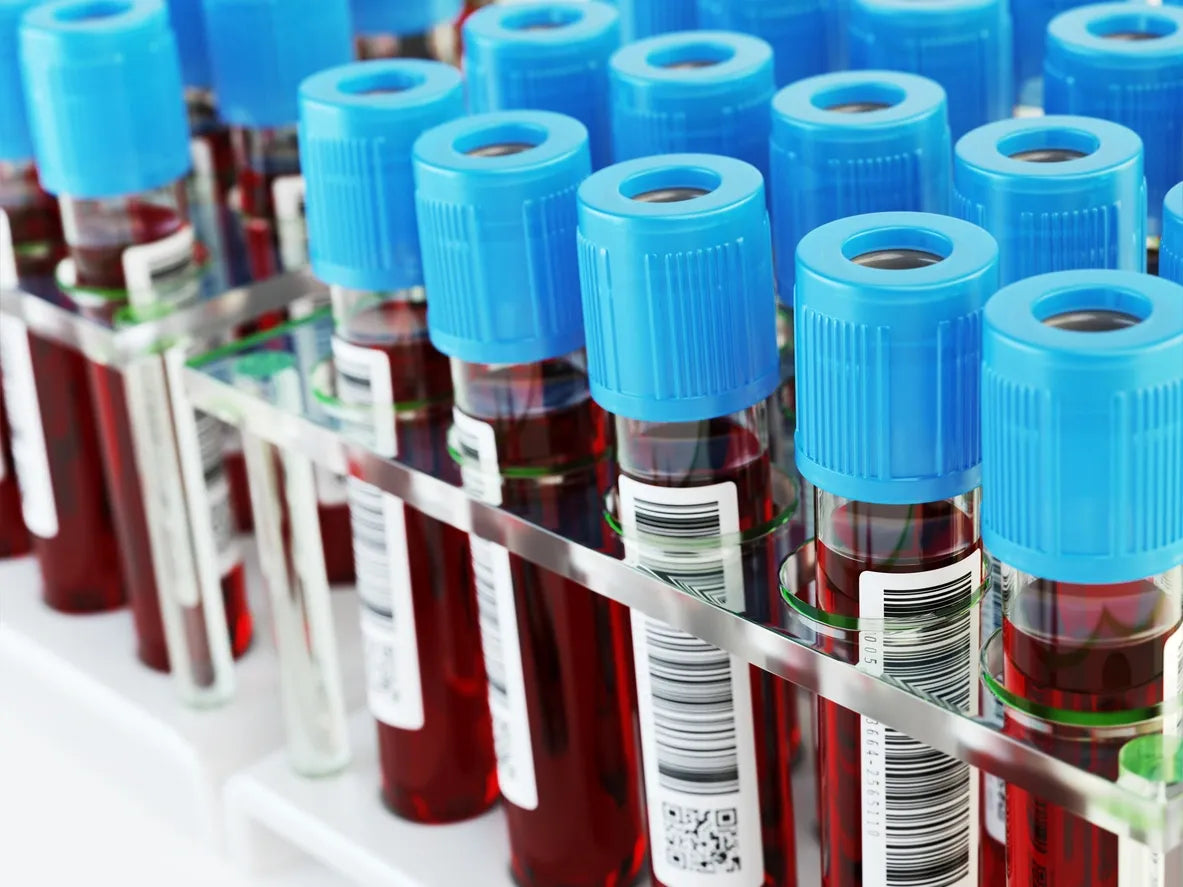
Understanding Endocrine and Metabolic Conditions
Learn about a wide range of hormonal, adrenal, thyroid, and metabolic conditions. Each article provides clear, concise information to help you better understand the causes, symptoms, and potential health impacts of these disorders.
Understanding Type 2 Diabetes (DMII)
What is Type 2 Diabetes (DMII)?
Type 2 Diabetes (DMII) is a chronic condition that affects the way your body processes blood sugar (glucose). Unlike Type 1 Diabetes, where the body cannot produce insulin, Type 2 Diabetes occurs when the body becomes resistant to insulin or does not produce enough insulin to maintain normal blood sugar levels. Over time, high blood sugar levels can lead to serious complications, including heart disease, nerve damage, kidney disease, and vision problems (American Diabetes Association [ADA], 2023).
How Does DMII Develop?
Type 2 Diabetes usually develops gradually over time. In the early stages, the body starts to lose its ability to properly use insulin. Initially, the pancreas compensates by producing more insulin, but eventually, it cannot keep up, and blood sugar levels rise (Dabelea et al., 2018).
Who is at Risk?
Certain factors can increase your risk of developing Type 2 Diabetes:
-
Age: People over the age of 45 are more likely to develop Type 2 Diabetes (ADA, 2023).
-
Family History: A family history of diabetes increases your risk (Gaglio et al., 2021).
-
Obesity and Sedentary Lifestyle: Being overweight or inactive significantly raises your risk (Smith et al., 2021).
-
Unhealthy Diet: A poor diet, particularly one high in refined sugars and fats, can contribute to the development of Type 2 Diabetes (Mollinedo et al., 2020).
- Ethnicity: People of African American, Hispanic, Native American, and Asian American descent have a higher risk (ADA, 2023).
What Increases the Chances of Developing Type 2 Diabetes?
Several factors increase the likelihood of developing Type 2 Diabetes:
-
Obesity: Excess fat, especially abdominal fat, leads to insulin resistance, where the body’s cells do not respond properly to insulin (Smith et al., 2021).
-
Physical Inactivity: Regular physical activity helps your body use insulin more efficiently and helps control blood sugar levels (Dabelea et al., 2018).
-
Poor Diet: Diets high in processed foods, sugars, and unhealthy fats can lead to weight gain and increased blood sugar (Mollinedo et al., 2020).
- Genetics: A family history of Type 2 Diabetes increases your risk, as does having a history of gestational diabetes during pregnancy (Gaglio et al., 2021).
Peripheral Impacts of DMII
Type 2 Diabetes affects various organs and systems in the body. Some of the most common peripheral impacts include:
- Nerve Damage (Neuropathy): High blood sugar can damage nerves, leading to tingling, pain, or loss of sensation, especially in the hands and feet (Smith et al., 2021).
- Retinopathy: Diabetes can lead to damage to the blood vessels in the retina, causing vision problems and possibly leading to blindness (Dabelea et al., 2018).
- Kidney Disease (Nephropathy): High blood sugar levels can damage the kidneys’ filtering system, potentially leading to kidney failure (Mollinedo et al., 2020).
- Heart Disease: Diabetes increases the risk of heart disease and stroke due to its impact on blood vessels and increased cholesterol levels (Gaglio et al., 2021).
The Role of Diet and Exercise in Managing DMII
Diet and exercise play a foundational role in managing Type 2 Diabetes. Proper diet can help control blood sugar levels, reduce insulin resistance, and promote weight loss. A healthy, balanced diet typically includes whole grains, lean proteins, healthy fats, and plenty of fruits and vegetables while avoiding processed sugars and excessive carbohydrates (Mollinedo et al., 2020).
Exercise is essential in improving insulin sensitivity, reducing blood sugar levels, and managing weight. Regular physical activity, such as walking, swimming, or strength training, helps your body use glucose more effectively and can lower blood sugar levels (Smith et al., 2021).
Health Force One: Comprehensive Diabetes Care
Health Force One specializes in treating individuals with Type 2 Diabetes through personalized education and coaching. Our approach integrates dietary guidance, exercise programs, and medication management to help patients manage their condition effectively.
-
Education & Coaching: Our team educates patients on the importance of healthy eating, regular physical activity, and blood sugar monitoring. Patients receive tailored coaching to adopt long-term habits that improve their overall health (Gaglio et al., 2021).
-
Medication Management: In addition to lifestyle modifications, our medical team helps patients navigate medication options, ensuring the right treatment for each individual. We provide guidance on how to use medications effectively and adjust doses when necessary (ADA, 2023).
- Insulin Pump Therapy: For some patients, insulin therapy may be necessary. Health Force One offers support for those who require insulin pumps for more precise and consistent insulin delivery. This technology helps manage blood sugar levels more effectively, with fewer injections and better control over fluctuations in glucose levels (Dabelea et al., 2018).
Conclusion
Managing Type 2 Diabetes is not just about medication, but about making lifestyle changes that improve overall health. Through dietary changes, exercise, and medication management, individuals with Type 2 Diabetes can take control of their condition. Health Force One is committed to providing comprehensive care that combines education, coaching, and the latest technology to help our patients live healthier, more fulfilling lives.
References
- American Diabetes Association (ADA). (2023). Standards of Medical Care in Diabetes—2023. Diabetes Care, 46(Supplement 1), S1-S154. https://doi.org/10.2337/dc23-Sint01
- Dabelea, D., Bell, R. A., & D’Agostino, R. (2018). Increasing prevalence of Type 2 Diabetes among youth—United States, 2001-2009. The Journal of Pediatrics, 167(6), 1126-1132. https://doi.org/10.1016/j.jpeds.2015.07.050
- Gaglio, B., Harleman, E., & Quinn, V. (2021). Social and environmental determinants of Type 2 Diabetes in a multiethnic cohort. The Journal of Clinical Diabetes, 39(2), 112-121. https://doi.org/10.1002/jcdi.12207
- Mollinedo, C., García-García, A., & López, J. (2020). Dietary factors in the prevention and management of Type 2 Diabetes. Nutrients, 12(4), 1052-1070. https://doi.org/10.3390/nu12041052
- Smith, M., Horan, B., & Fisher, M. (2021). Physical activity and its role in Type 2 Diabetes prevention. Diabetic Medicine, 38(1), 4-13. https://doi.org/10.1111/dme.14413


